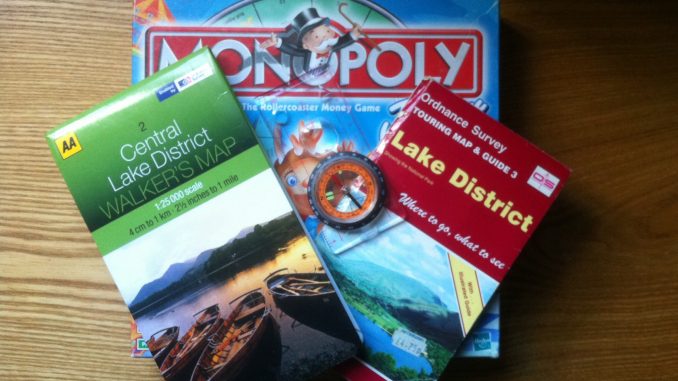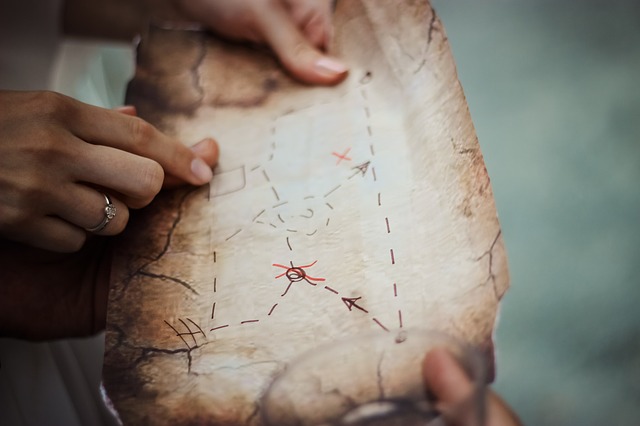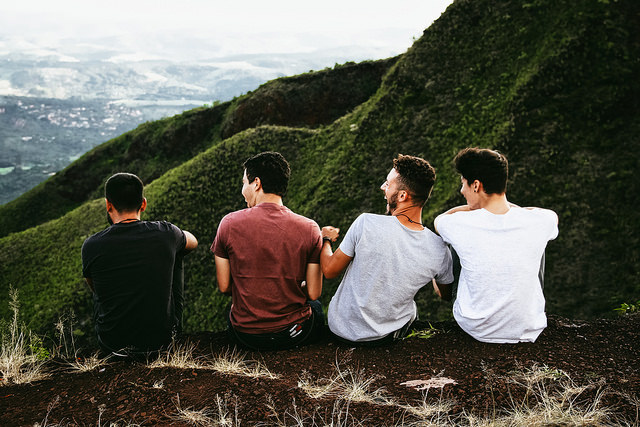
Ordnance Survey Maps are used in the UK for hiking and exploring, but did you know about the great adventure challenges and OS map reading games they can be used for?
The Origins of OS Maps
OS maps originated in 1745 from the military need to map the land to aid the movement and placement of soldiers.
The approach used was to graphically represent features on the land. To accurately measure distances and positions on land, the entire country was carved up into a series of triangles using mathematical trigonometry. Evidence of this can still be seen today by the trig points (triangulation pillars) that are scattered across the landscape at the top of hills.
Triangles were used because it is impossible to get the shape of a triangle wrong if you know the length of the sides and the angles. Squares don’t work because you can get the length of the sides correct but the corners may not be right angles (a parallelogram).
What are OS Maps Used For Today?
Today, OS maps are used for leisure, business and government purposes. OS Maps for leisure enable you to find places of interest to visit and work out how to get there. Hiking and exploring is one of the main uses, because OS maps provide a great way to plan your route and navigate on your journey.
OS Maps for Business provides location accuracy and allows you to see how infrastructure interacts with the land. It is a powerful tools for planning and engineering.
OS Maps are also used by the military for presenting situational awareness, current operational pictures, plans and strategies.
But, did you realise that you can use OS maps for some great personal or team challenges?
Using OS Maps to Gamify Your Next Adventure
I have been using Ordnance Survey maps (OS maps) for nearly forty years now, exploring and adventuring in a variety of urban and country locations around the UK. I created these OS Map games and challenges when I was a Venture Scout to pep up our activity programme. As teenagers, most of us had learned pretty much all of the skills to accurately navigate more or less anywhere in the UK. Finding our way in complete whiteouts on Dartmoor with pinpoint accuracy to find stone circles was relatively straightforward. So, we needed some new challenges for our adventure weekends.
These OS Map games can be made as easy or difficult as you need. It is down to your judgement.
OS Map Reading Games and Challenges

OS Map Symbol Scavenger Hunt
Visit the location represented by every symbol on the OS Map key.
On every OS Map there is a key that explains what every symbol means. Use the OS Map symbol key as your scavenger hunt and visit a location that is symbolised by that symbol.
So, visit a church with a tower, railway station, trig point, beach, pub…
You can set yourself a map challenge to visit every OS map symbol location within a year.
Highs and Lows
Visit the highest and lowest locations in your area using the OS Map to work out where those places are.
Get hold of the OS map for where you live. Have a look at the contour lines and spot heights to find out where the highest and lowest points are. You can then plan a trip to visit the places.
You can do the same thing for any OS map around the UK. If you are going on a holiday in the UK, you could use this challenge as part of your adventures.
Trig Post Bagging
Just as it says; find the trig points on OS maps and visit them for real. Take a selfie and stick it on your social media.
#getoutside
Grid Bashing
Grid bashing is the art of travelling along the grid lines on a map. Choose a location that contains some open access land, such as Dartmoor or the Brecon Beacons. Then select a start point that you can get to and see whether you will be able to travel along the grid lines to a destination.
Part of the challenge will involve successfully crossing any terrain that you come across. Steep hills, streams, rivers and other hazards. BUT, make sure that you have a ability to cross those hazards. Don’t consider river crossings unless you know it is safe to do so. We always avoided routes that crossed rivers, but streams were always up for grabs. We also carried clmbing gear to climb or abseil steeper terrain. We had experienced qualified climbing instructors in our group who knew exactly what was possible for the abilities of the group.
Dead Letter Boxes
On Dartmoor, Bodmin and the Brecon Beacons, people have hidden boxes with ink stamps in them. You can buy letterbox books which give clues to where the ink stamps are hidden. It’s a bit like geocaching without the map coordinates or GPS to help you.
Geocaching
If you like to be a bit more accurate with your treasure hunting, geocaching could be more suitable for you. Websites like geocaching.com have clues and coordinates to hidden caches of goodies hidden all over the world. You can use a GPS or mobile phone app to locate where they are hidden. The challenge is the last few metres of working out where the box is hidden.
You can find out more in my blog post on everything you need to know to go geocaching.
Scavenger Hunts
Scavenger hunts are treasure hunts where teams are given a list of things to retrieve or places to visit. You can make this as cunning as you wish. One way to start is to provide each team with OS Map coordinates to a location. Once they arrive at the location they have to phone the game organiser with the answer to a question that can only be answered by visiting their current location, such as the third item on the menu in the window of a restaurant. The game organiser then give the coordinates to the next location.
Treasure Hunts
Just like a pirate, from the start location, take x paces on a bearing of …
Work out instructions on a map to find the end point. Then travel there to find the treasure.
You can add an extra bit by giving a further set of instructions to micronavigate to the actual location. No GPS allowed.
Map a Blank Grid Square
Find a suitable area on a map, and then provide each team with a piece of A4 paper with a blank OS map grid square on it. It should have the coordinates for the corners of the square on the paper.
The team then have to use a GPS and a bit of walking to map the area and draw in the detail for that map square. Paths, roads, buildings and other OS map features. It is not as easy as you think, and there is definitely a strategy required to make it easier.
Drops and Blindfold Drops
Drops are where you drop a team at a location and they have to find their way back to a rendezvous point. The simplest version is to let them know where you drop them, and have the rendezvous point as being a tall building that they can see wherever they are.
To make it more challenging, you blindfold everyone in the car (apart from the driver) so that they don’t know where they have been dropped. They then have to use their navigation skills and the OS map to work out where they are and how to get to the end point.

Photo credit: FootMassagez via Visualhunt / CC BY
Pacing and Accuracy with Micronavigation
Micronavigation is the art of being very precise with your map reading. On open moorland and countryside, there aren’t always paths to follow. You have to use your navigation skills to read the OS map contours and features to triangulate your position. Knowing how many of your paces equate to 100 metres will be extremely valuable.
The challenge is to then find a coin placed at a specific location on open land.
Radio Tests using contours and intervisibility
Use a map to calculate the visibility between two personal mobile radios using contours and buildings. Then check to see how true it is. Remember radio waves can bounce and bend around structures.
Making contour models
This is a great activity for younger ages. When learning about contour lines on OS maps, if you trace contour lines onto separate pieces of card and cut the out, by layering them one on top of another you can see what the terrain in like in 3D.
Steeplechasing
I used to do steeple chasing for ‘A’ level art and design. You select a tall structure and then draw or photograph it from various locations at a distance from it. You then arrange your artwork giving lines of bearings and distances to the structure.
We also used to overlay the artwork on a hand drawn map, with the structure in the centre and the pictures at the correct locations on the map.
Intervisibility Shots
Choose an iconic landmark and see how far away you can take a photo of it from a location on the ground or water (Air not allowed). Best to choose a clear day.
You can also try to see what the furthest distance you can send a visual signal is using semaphore or a light.
Where to Buy OS Maps
So, have I got you interested? You are going to need to buy an OS map.
You can buy OS maps as paper maps and digital OS maps. You can even buy custom OS maps which cover any area you choose. These make perfect gifts or if you want a map that covers an area you spend a lot of time outdoors exploring.
If you just want to try it out, you can borrow OS maps from your local library.
Find out more and buy OS custom maps, OS online maps and app, OS maps GPS and outdoor sports tech on the Ordnance Survey Map Shop.
